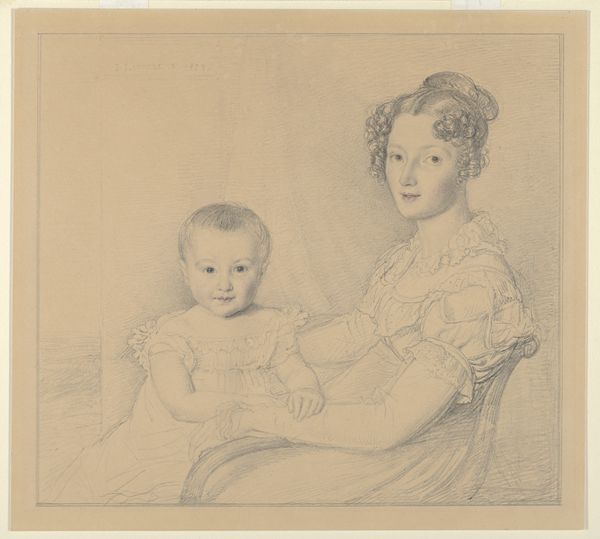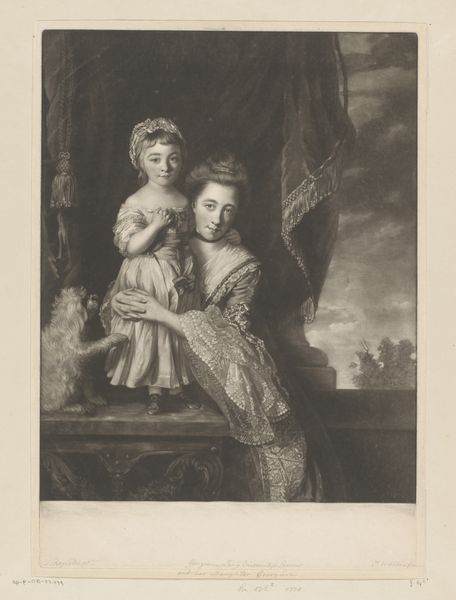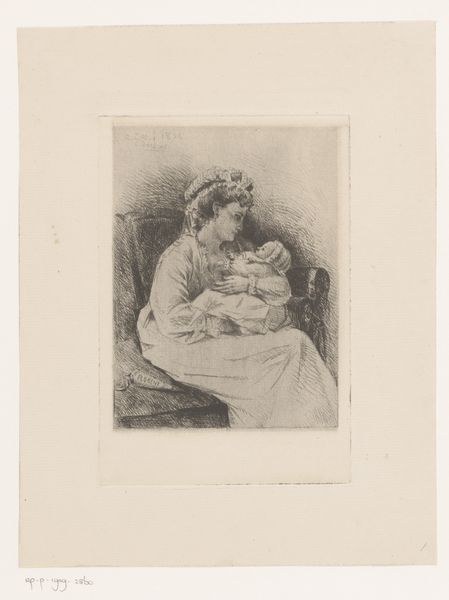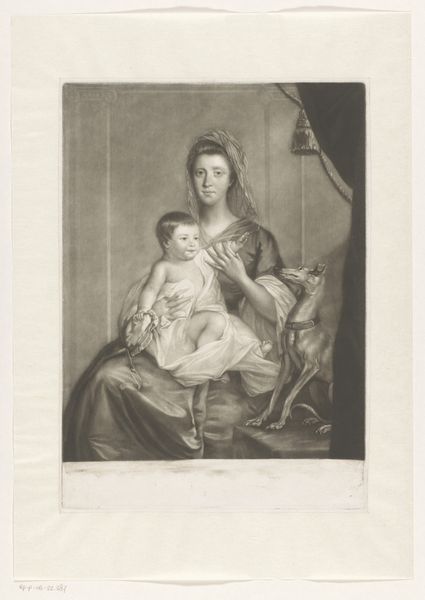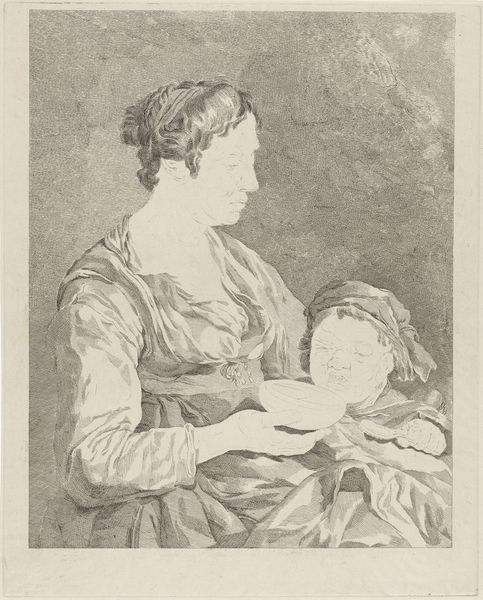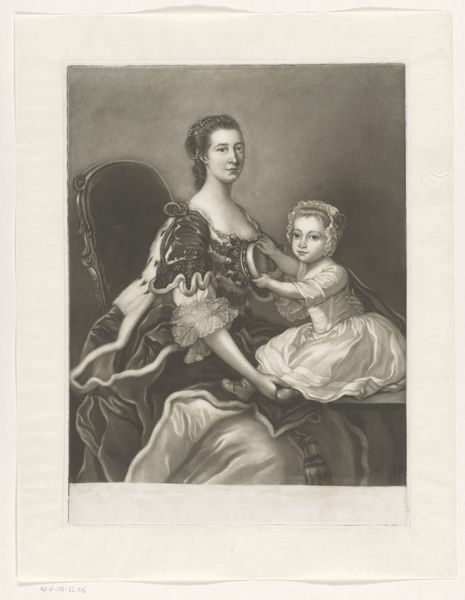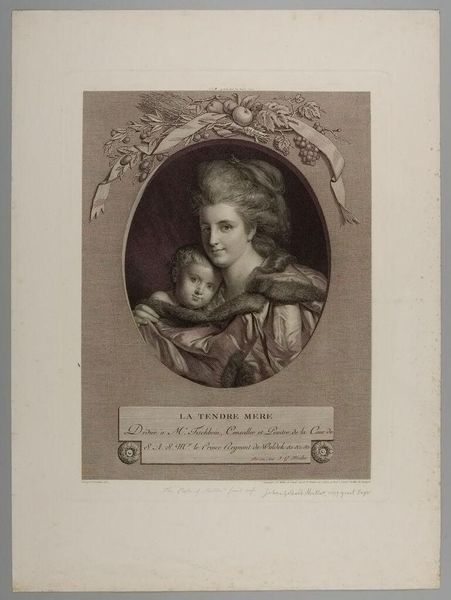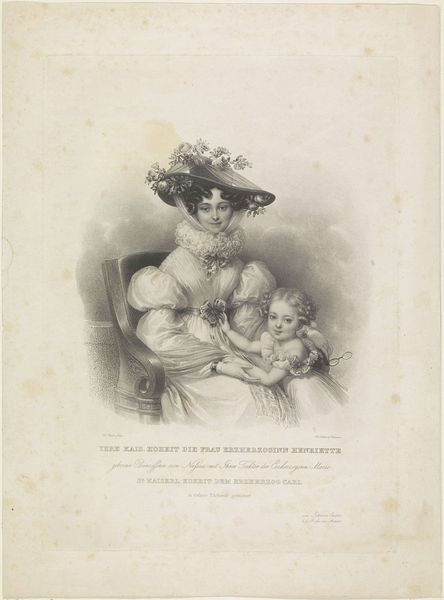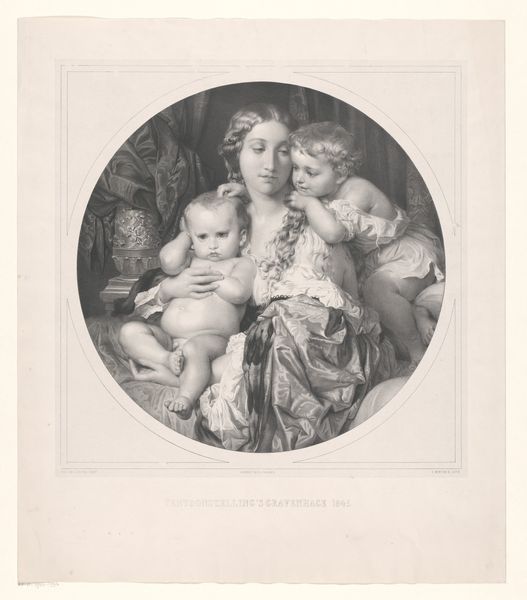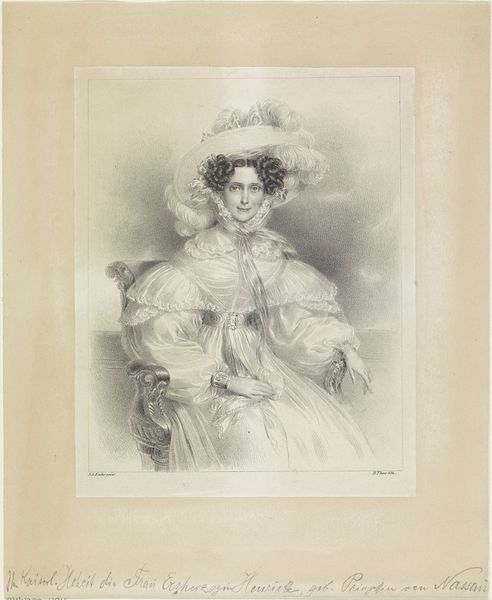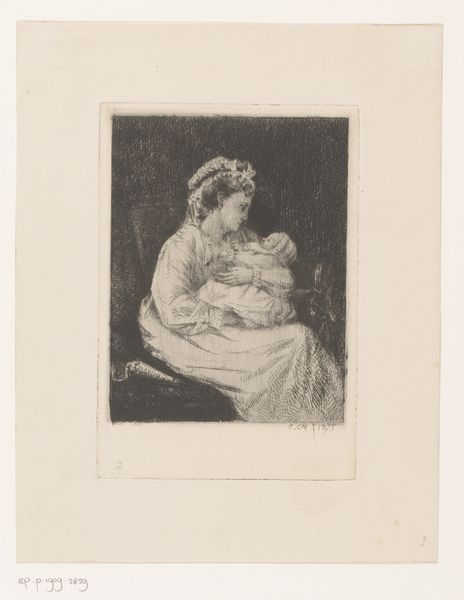
drawing, paper, ink, pencil
portrait
pencil drawn
drawing
16_19th-century
paper
ink
pencil drawing
romanticism
pencil
portrait drawing
history-painting
Copyright: Public Domain
Curator: Michael von Held's "Mother with her boy," dating back to 1833, offers a glimpse into early 19th-century portraiture. What is your initial reading of this piece? Editor: It feels delicately crafted, almost ethereal. The medium is understated—ink and pencil on paper—but the overall effect suggests an attempt to idealize domestic life, while the oval format seems to hint at the constraints on women at the time. Curator: The work is interesting when considering formal strategies to convey character, such as, the way the composition situates the mother figure above her child, immediately conveying status. The swirling, ornate rendering of her hair is also notably contrasted against the understated depiction of the child. Editor: Agreed, but how much does that hierarchy tell us about the labor involved in making the artwork and its availability to different social strata? It begs the question—who were the intended consumers, and what class assumptions underpin such seemingly intimate scenes? The precision suggests it would've demanded significant time, especially considering the tools available in 1833. Curator: That attention to detail does provide a very specific image of beauty that feels very controlled, if we look closer at the precision, the contouring—every element contributes to this constructed vision of feminine and maternal ideals. Even that carefully adorned frame accentuates the controlled beauty, directing our focus inward. Editor: And while the artist crafts this controlled vision of motherhood, we have to acknowledge the absence of the means through which the vision itself becomes possible; what specific types of paper and pencils were used to construct this image and how were these processes of making valued, or devalued in the social hierarchy? Curator: To that point, the framing narrative imposed by its structure creates meaning about perception and idealisation. Considering Romanticism, can we perceive any sentimentality behind familial belonging that the artist aims to express, especially during an era defined by upheaval? Editor: I would argue that von Held uses familiar forms – portraits of mothers and sons that romanticise sentimental bonds - but with materials that speak to larger socio-economic realities about artistic production in 19th-century Europe, urging us to ask some important questions beyond the immediate aesthetic appeal. Curator: Interesting take. Perhaps by examining these techniques and form more critically, we find new layers of meaning embedded within seemingly simple, sentimental portraiture.
Comments
No comments
Be the first to comment and join the conversation on the ultimate creative platform.
